History Bites
would you Fancy a blacksmith pulling out your rotten tooth (while you pray they took the right one), or having dentures made from the teeth of fallen soldiers? Take a trip to the olden days to Discover why it’s good to live in the 21st century...
Before the introduction of the profession as we know it today, dental patients went through some dark times – suffering everything from dodgy practitioners to torturous treatments. Delve in to the distant, and not-too-distant past, for an insight into just how far we have come…
The bad old days
Suffering from toothache in the distant past was a grim affair. If you were wealthy, then you could employ the services of a skilled goldsmith to pull teeth or create false ones… but the not so wealthy had to make do with the local healer or blacksmith, hoping they pulled out the right tooth.
In medieval days, it was believed that tooth decay was caused by worms in the teeth, as this 16th-century cure for toothache describes: “For ye toothache or wormes in ye teith. Take peper and stampe it and temper it w’gude wyne and supe th’of warme and hauld it in thy mowth till it be cauld and then spit it out, and do this oft and thow salbe delyverit of angwysh and greif.”
The original ‘dentists’ developed from the formation of a new profession: the Barber Surgeon. This resulted from a papal decree by Pope Honorarius III (1150-1227) that prohibited all persons in holy orders from practising medicine. That meant the monasteries, which had often provided hospital services to their local communities, had to employ the skills of barbers. Already used to working with sharp blades, they were trained to undertake minor surgical procedures.
From then on, ‘barbers’ would be called upon to do anything from cutting hair to amputating limbs, and over time created their own guild of Barber Surgeons. However, other trades, such as blacksmiths, farriers and shoe makers, offered to pull teeth for a fee as they had the tools and the brute strength to provide such a service. Unfortunately, their ignorance of teeth often led them to damaging other teeth and even jawbones, causing even more pain.
While medieval cures for toothache might sound ridiculous, a dental book published in 1829 shows that the profession had not progressed much further in its treatment of tooth decay.
It suggested the use of leeches to reduce the inflammation of the gums caused by caries – termed ‘gangrene of
the teeth’ – and after excavating the ‘gangrene’, filling the cavity with gold, tin or lead. The book also mentions using sulphuric acid and ‘corrosive caustics’ to treat carious cavities.
While surgeons made great strides in pushing the boundaries of medical practice, and thus lifting the esteem of their profession, dentists did not enjoy such admiration. Even up to 1800, dentistry was held in very low status, as the barber still invariably combined tooth extraction with blood letting, haircutting and shaving.
While the ‘gentlemen’ practitioners of dentistry were trying to promote the professionalism of the sector, their efforts were seriously undermined by the profusion of ‘quacks’ – opportunistic practitioners with little or no training – who also blatantly advertised their services (positively frowned upon by the gentlemen dentists at the time) and eroded the reputation of dentists by their poor practice, over-charging and carrying out unnecessary work.
Dentists did not actually exist as a profession until the Dentists Act of 1878, which meant that only those who had undergone recognised training could call themselves a ‘dentist’ or ‘dental surgeon’ and be admitted to the official Dental Register. Unfortunately, there was a loophole in the law, as there was no requirement to register. People could practice dentistry as long as they did not call themselves a dentist – they used signs like ‘Dental Rooms’ or Dental treatment here’ to publicise their services.
It was not until 1921 that another Dentists Act was created to raise standards and ensure that only those trained at a dental school could be admitted to the Dental Register and be allowed to practice dentistry.
King James IV – Royal Dentist
Hunting, falconry and jousting are the typical sports of kings in the long-distant past, but James IV of Scotland (1473-1513) had another hobby: dentistry.
It all started in 1503 when the king summoned a ‘barbour’1 to extract one of his teeth for the sum of 14 shillings (around £4502 in today’s money).
King James IV obviously had an interest in all things medical, as it is recorded that he tried bloodletting on patients and even treating and dressing ulcer wounds. He was also keen on dental hygiene, as it is recorded he bought two gold toothpicks suspended from a chain.
In 1511, he decided to get a more practical experience of dentistry and purchased “ane turcase [pincer] to tak out teith” and extracted a tooth of ‘one of his subjects’, for which the King paid him 14 shillings. Bizarrely, it is also recorded that the king pulled two teeth from one of his own barber-surgeons:3 “To Kynnard the barbour for twa teith drawn furth of his hed by the king, 14s”.
Scottish historian Lindesay of Pitscoe (1530-90) described the king’s medical knowledge in rather florid terms: “This noble king, James IV, was well learned in the art of medicine, and also a cunning chirurgenor4, that none in his realm, that used that craft but would take his counsel in all their proceedings.”
However, his interest in dentistry was far from just a royal whimsy, as he was responsible for granting a Charter of Privileges in 1505 to the barbers and surgeons of Edinburgh. A year later, this was ratified as a Royal Charter for the establishment the Royal College of Surgeons of Edinburgh on 13 October 1506.
Although James IV met his death on Flodden Field in 1513, his interest in bloodletting and pulling teeth helped to start a new age of enlightenment in Scotland in medicine and science.
- An engraving showing a dental surgery of the time with the dentist engaged in a struggle to remove a lady’s tooth with some forceps, (the reflection of which can be seen in the mirror) while standing on a purpose-made stool and with an arm-lock round the patient’s neck. Artist: George Cruikshank (1792-1878) Image courtesy of the British Dental Association Museum
- Pelicans were first mentioned in 1363, and by the 16th century they were the main extraction tool favoured by itinerant tooth-drawers. Their name derives from the resemblance of the claw to the beak of a pelican. The pelican worked by placing the claw over the crown of the tooth to be extracted and the bolster against the outside gum. Pressing down on the handle levered the tooth out. Image courtesy of the British Dental Association Museum
- The transplanting of teeth was popular at the end of the 18th century. Poor people were paid to have their healthy teeth removed for immediate placement into the waiting mouths of wealthy, older patients. Artist: Thomas Rowlandson (1756-1827)
- If you wanted a nice set of dentures, you needed real human teeth cemented into an ivory base Images courtesy of the British Dental Association Museum
The first implants
In the 18th century, surgeons started experimenting with implants for wealthy clients by extracting a suitable ‘live’ tooth from a donor – usually a poor wretch who was willing to trade teeth for payment – and insert the new tooth into the empty socket of their client. This would be fixed in place by a silver wire or silk ligature.
British surgeon John Hunter (1728-1793) pioneered this approach and it is recorded that one of his patients stated that he had three implanted teeth which lasted for six years, although the donated teeth never properly bonded with the patient’s gums.
In most cases, the body rejected the implants, and the clients also ran the risk of inadvertently contracting syphilis or tuberculosis from the recipient’s tooth and blood during the operation.
Waterloo teeth
As the sun rose on the morning of 19 June 1815 in northern Belgium, the carnage of one of the greatest European land battles could be witnessed: 50,000 soldiers lay dead or wounded. While it meant celebrations in Britain, as Napoleon was finally defeated at Waterloo, it also brought a cheer to dentists as the grisly harvest from the dead flooded the market with cheap, human teeth for dentures.
In the past, dentures had always been the preserve of the wealthy. They were usually made from elephant, hippopotamus or walrus ivory or animal bone, which were carved into dentures to replace full sets of teeth – a skill provided by goldsmiths or clock makers rather than medical specialists.
However, ivory and bone had two disadvantages: the teeth did not always look natural and they also deteriorated relatively quickly, rotting in the mouth and causing the most evil-smelling breath – a reason why many genteel ladies of the upper class carried fans to waft away the stink.
Of course, the best dentures were made out of human teeth, but they often came from dubious sources, providing lucrative work for ‘resurrectionists’ – body snatchers – who dug up corpses.
As the battle of Waterloo was over as night fell on 18 June, it allowed plenty of time for the battlefield scavengers to plunder the fallen undisturbed, taking valuables and also deftly pulling teeth that they know would bring them riches. But the volume of teeth that made it onto the market caused the price to drop and helped to make good quality dentures more affordable for the middle classes of England.
In fact, the dentures, with teeth inserted into a gold or bone base, soon became known as ‘Waterloo teeth’ for years afterwards.
There were so many spare teeth it is reported that supplies were shipped to the USA by the barrel.
However, the use of human teeth started to decline in the mid 1900s with the development of porcelain teeth by London goldsmith and denture maker Claudius Ash, who had perfected the manufacturing process and started to produce them commercially in 1837.
The invention of vulcanite in 1840s also helped to revolutionise the denture market by providing an ideal mouldable, hardened and durable rubber base to hold the teeth, making them even more affordable.
REFERENCES
Scottish Medicine – An illustrated history, Helen Dingwall et al, 2011
Dentistry – then and now, J. Menzies Campbell, 1981
Notes
- During the Middle Ages, ‘barbers’ would be called upon to do anything from cutting hair to amputating limbs, and over time created their own guild of Barber Surgeons.
- Calculated using www.measuringworth.com
- www.ncbi.nlm.nih.gov
- Surgeon

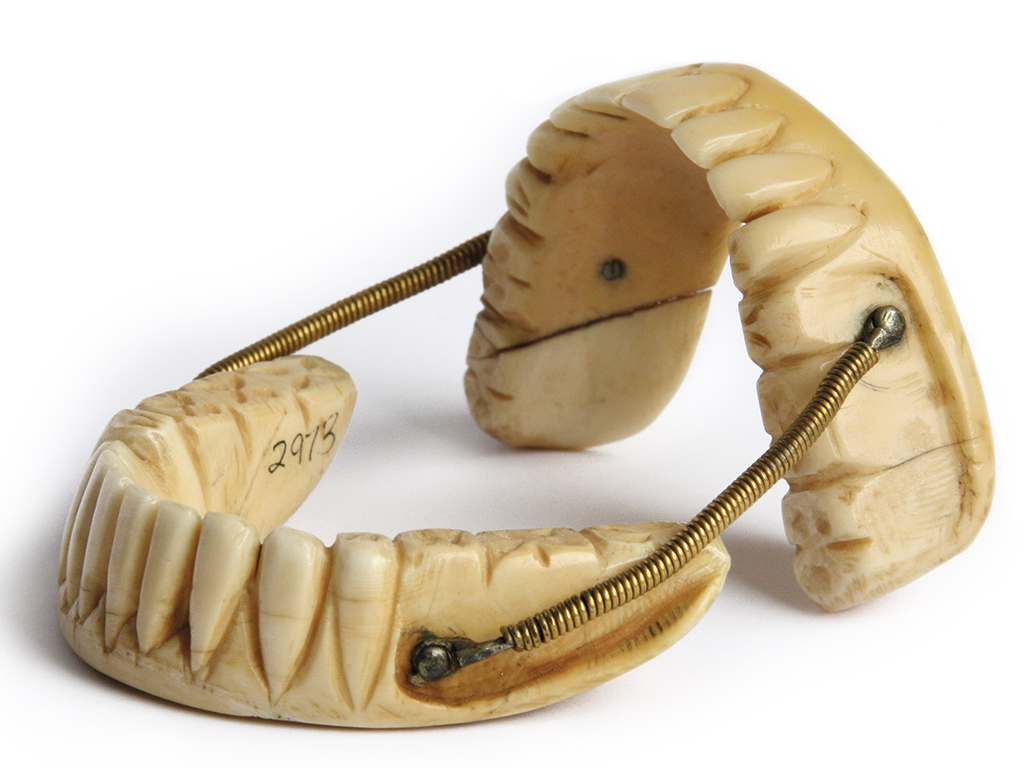
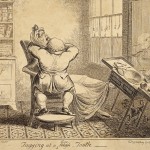
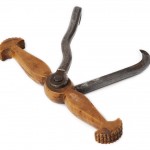
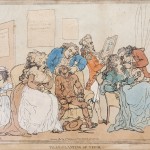
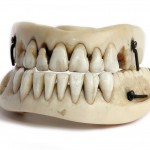
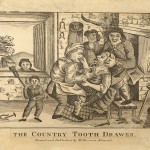
Comments are closed here.